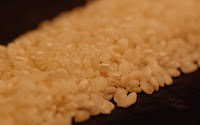To complete this task I decided to go to the old town, as there are plenty of interesting objects: buildings, trees, patterns, statues. I did not have a detailed plan, but I knew that I wanted to try different kind of objects in vertical frame. I decided to take pictures as pairs at the same time and then analyze them by pairs.
I decided to start from outside objects and took some pictures of the church and the monument.
1. The first two pairs of pictures are tall objects. All four prove that when taking a vertical picture all attention is paid to the object itself and when trying to take a picture of the same object, but vertically, the background should be considered as well. It was quite a sunny day and I decided to use a polarizing filter, which was a mistake. It seems that the sun in winter does not need to be polarized, though it seemed quite bright. The sky looks rather grey, while it was actually blue.
2. The next pair of pictures is the same church, but from the closer distance. Both shots taken from the same distance. The horizontal one looks surprisingly more interesting. Two gothic windows that appeared in the frame when I took a horizontal shot make the picture look not as boring as a vertical one.
Honestly, I don't like none of them.
3. Out of next two shots vertical definitely looks more attractive. Though maybe there are too more details on the background. And the same problem as with first shots - polarizing filter did not make much sense on these shots.
4. For a single icicle on the next shot, vertical composition works better. However, I can imagine that in case of the whole row of icicles, horizontal would be more preferred.
I moved further into the old town, and turned to the colorful buildings with balconies that look particularly nice in contrast to the white snow.
5. The pair of blue building shots looks almost equal. But I would prefer the vertical composition more, as it looks more like some kind of creature with eyes, nose and mouth.
6. Out of these two shots, I would say - horizontal wins. I just found details of the statue more interesting than the vertical composition with different levels of snow.
7. Out of grey balconies shots, the single balcony one looks more balanced. I think, it has something to do with an angle of shot of the vertical picture. Also, there is no reflection in the second window, which makes second balcony look empty and disrupts the balance. In case of the closer distance shots of the same balcony. The vertical one looks better, because there is more frame given to the reflection, than to the balcony, as it is on the horizontal one.
8. Both shots of yellow building look fine, though I would prefer the horizontal one, because of the focus on the tree. This detail makes shot more attractive.
After I finished with these buildings, I am going further to the Christmas market. For taking some pictures there change my Tamron 18-250mm F/5.6-6.3 lens into Tamron 90mm F/2.8 Macro, because I wanted to take some shots of small souvenirs there.
9. My conclusion regarding next three pairs of shots would be that both horizontal and vertical frames work for such objects. It is only a matter of right choice of distance and angle of view. E.g in case of the third pair, the vertical shot would look better, if the black background was not there.
10. As my Tamron 90mm is also good for portraits I decided to experience on vertical and horizontal portrait. In this case, vertical frame definitely looks better, as a portrait. Horizontal frame would make more sense, if there was some panorama on the background.
11. To continue experimenting, I decided to take some shots of interesting patterns. In all three cases it is clearly seen, that it is highly dependent on the object shape, whether vertical or horizontal frame works better. Even if the whole object does not fit in horizontal or vertical frame, it is worth trying single parts of the original composition (as it is, for example, in case of metal candlestick).
Summarizing this exercise, I would say that although the choice of the vertical or horizontal frame is rather intuitive, it is always worth taking both shots. Picking up some detail on the original composition or adding some background to the shot might give unexpectedly interesting results.








































































